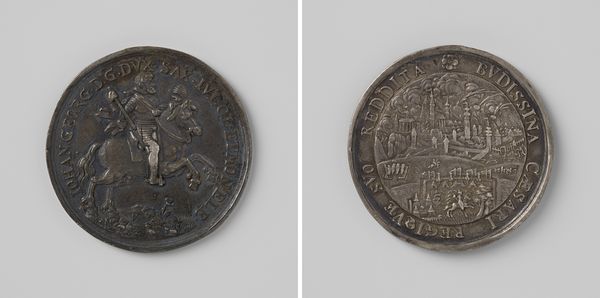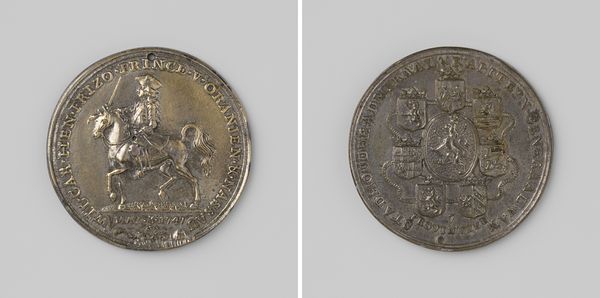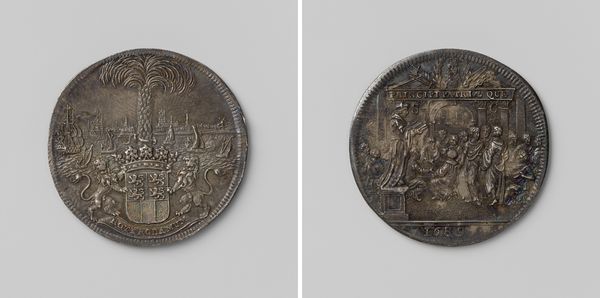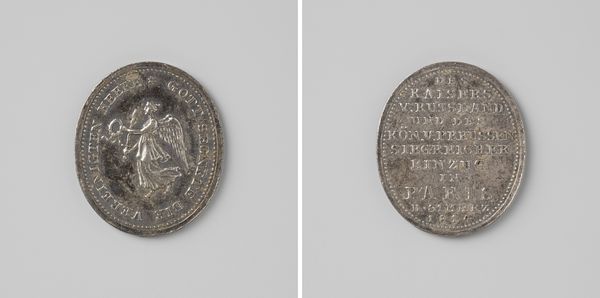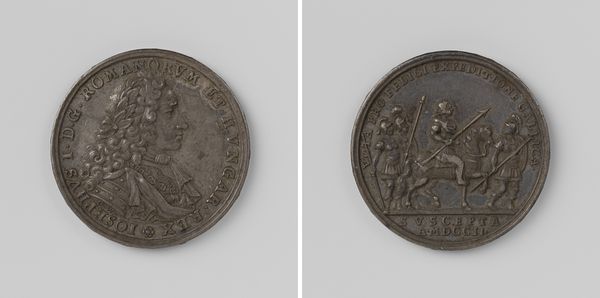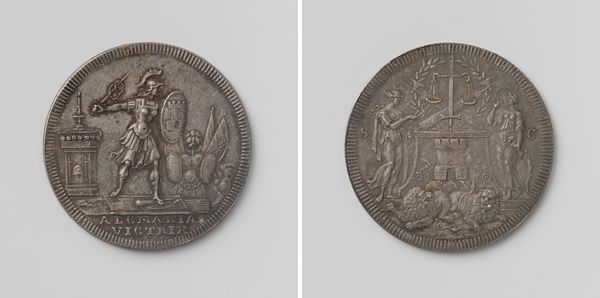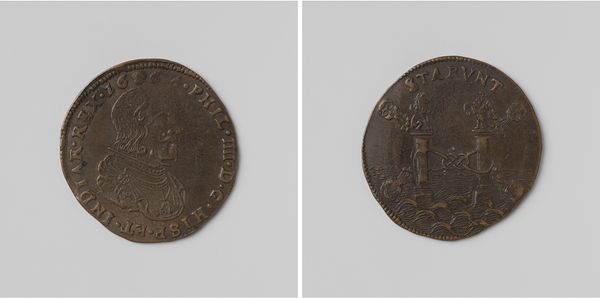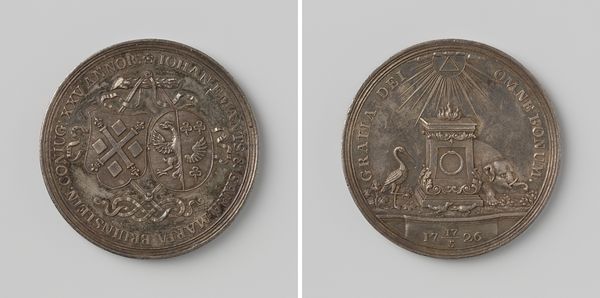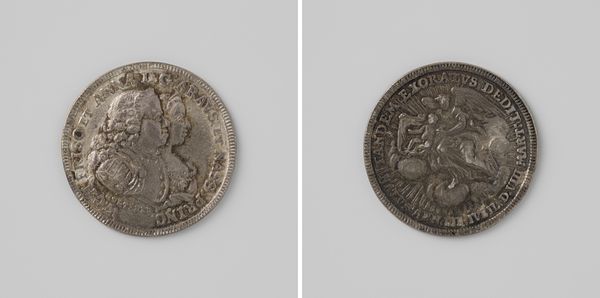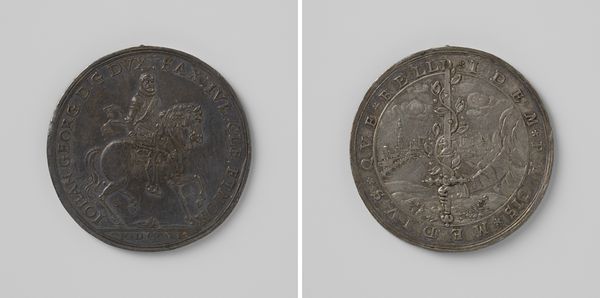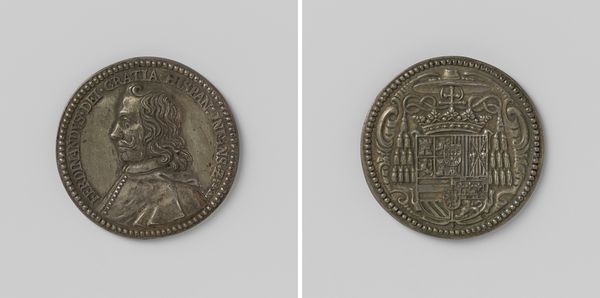
metal, relief, sculpture, engraving
#
narrative-art
#
baroque
#
metal
#
sculpture
#
relief
#
sculpture
#
history-painting
#
engraving
#
statue
Dimensions: diameter 3.8 cm, weight 139 gr
Copyright: Rijks Museum: Open Domain
Editor: Here we have Edward Pinchbeck’s metal relief, "Inname van Carthagena door admiraal Vernon," made in 1741. It depicts a battle scene, and on the other side, a man accepting surrender. It feels very formal and celebratory, but also a little…one-sided in its depiction. What do you see in this piece? Curator: Indeed. Beyond the surface-level celebratory tone, I see a complex encoding of power dynamics. This isn't just about commemorating a victory; it’s about constructing a specific narrative. The portrayal of Admiral Vernon accepting surrender is loaded with symbolism concerning colonialism. How might the 'victory' depicted here relate to larger, oppressive systems at play in 1741? Editor: I hadn’t really considered that. It’s easy to get caught up in the sort of heroic depiction and forget the context. You mean things like slavery and exploitation of resources in the colonies? Curator: Exactly. And beyond those overt acts, consider also how images like this, made into popular commemorative items, would normalize and even celebrate those exploitations within British society. It serves as a powerful propaganda tool, doesn’t it? Does knowing this change your initial feeling of celebration at all? Editor: Absolutely. It definitely complicates the feeling. It makes you think about whose story is being told and who is being erased from the narrative. Curator: Precisely. These objects are historical documents but they are not neutral. They participated in constructing ideologies of racial and political superiority, then and now. Editor: I see the piece very differently now. It's a stark reminder that art can be used to justify injustice. Curator: And by interrogating pieces like this, we challenge those justifications and empower ourselves to understand the continued reverberations of that history.
Comments
No comments
Be the first to comment and join the conversation on the ultimate creative platform.
